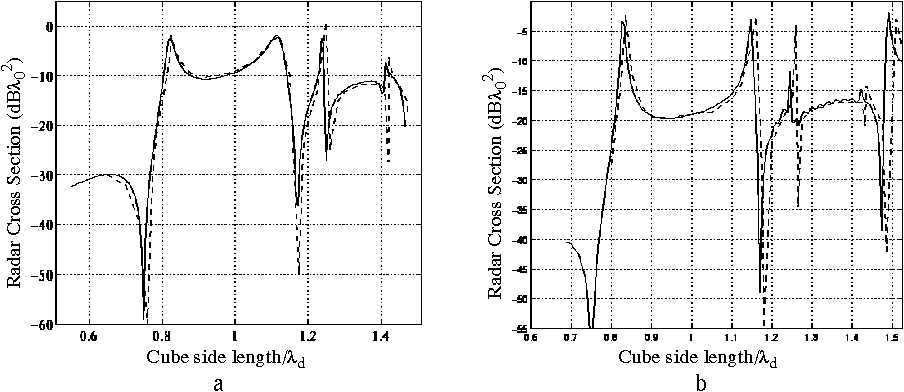The three-dimensional time domain Transmission Line Matrix (TLM) method has been applied to compute the RCS of dielectric cubes of relative permittivity 37.84 and 79.46, and comparison has been made with published measurements [1]. Since the high permittivity cubes ring for a very long time, very good quality absorbing boundary conditions having long term stability are required. We have achieved these by modifying Higdon's absorbing boundary conditions. Long term stability has been obtained by using proper discretization of the boundary operators (derivatives), and very low reflections have been obtained by concatenating two first-order boundary operators. We have obtained stability beyond 60,000 time steps by placing the absorbing boundaries just 20 cells away from the cube surfaces (cube size is 15 cells). The near-field to far-field transformation technique based on the well known equivalence principle is applied to compute the far electromagnetic field components from the near tangential electric and magnetic fields on a closed fictitious surface surrounding the scatterer. The RCS data computed with the TLM method agree very well with the measurements published in [1], and are plotted in Figs. 1a and 1b. The frequency shift between the TLM results and the measurements is negligible, while a considerable frequency shift has been reported between results obtained with FDTD and measurement [1]. Further details can be found in [2].

Fig. 1 - RCS computed with 60,000 TLM time steps: solid - TLM, dotted - Measurements by Trueman, et al. [1] (a) cube side length = 8.97 mm, epsilon_r = 37.84, bistatic angle = 8 degrees (b) cube side length = 7.72 mm, epsilon_r = 79.46, bistatic angle = 8 degrees